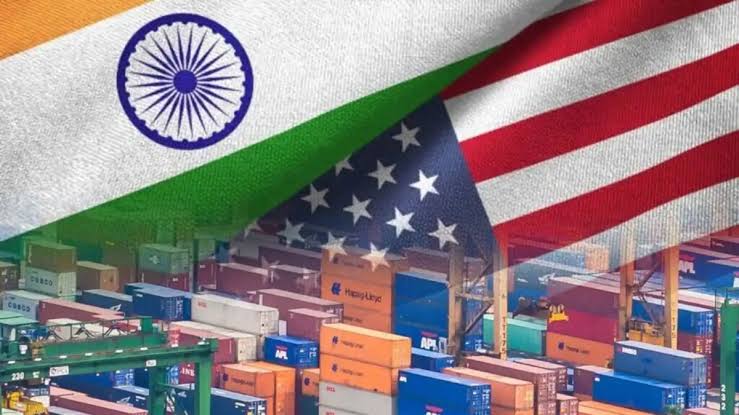 Image Source: Regtech Times
Image Source: Regtech Times
In response to escalating global trade uncertainties and the recent steep tariffs imposed primarily by the United States, India has initiated comprehensive and bold reforms aimed at mitigating the adverse impacts on its economy and sustaining growth momentum. These reforms reflect a strategic blend of regulatory easing, tax restructuring, and sector-specific support measures designed to strengthen domestic resilience, support exporters, and protect key vulnerable segments such as MSMEs, farmers, and entrepreneurs.
Key Developments Enhancing India’s Economic Resilience
The country faces significant external challenges, including a 50 percent tariff hike by the US on a broad array of Indian exports, supply chain disruptions, geopolitical tensions, and tariff-induced uncertainties that have subdued global trade growth projections to 0.9 percent in 2025 from an earlier 2.7 percent forecast. To address these headwinds, India’s Finance Ministry and Prime Minister Narendra Modi have spearheaded initiatives focused on structural reforms and economic diversification to maintain robust macroeconomic stability and growth prospects.
Prime Minister Modi’s administration has responded with a multi-pronged approach:
-
Establishment of a Task Force for Next-Generation Reforms to simplify regulations, lower compliance costs, and bolster start-ups, MSMEs, and entrepreneurs.
-
Major GST reforms scheduled for October 2025 that reduce tax slabs from four to two, particularly lowering taxes on essentials, agricultural inputs, women’s products, and MSME goods. This aims to stimulate consumption and ease the tax burden on citizens and businesses.
-
Strengthening employment through targeted schemes like PM Viksit Bharat Rozgar Yojana and a focus on education and skill development aligned with emerging global market demands.
-
State-level deregulations enhance ease of doing business, such as removing restrictions on night shifts for women workers, increasing productivity and participation in the workforce.
Implications of US Tariffs and India’s Strategic Responses
The US recently doubled tariffs on Indian goods to as much as 50 percent, impacting exports valued in billions, especially sectors like textiles, gems and jewelry, shrimp, carpets, and chemicals. This tariff hike poses risks to thousands of small exporters and threatens jobs, particularly in export-reliant regions.
However, government officials emphasize that while the tariffs affect a segment of GDP (with exports representing around 10% of India’s GDP and an estimated 1 to 1.5% potentially impacted by tariffs), the overall impact on value addition and GDP will be moderated partly through increased domestic demand and reforms boosting disposable income and consumption. The ongoing negotiations between India and the US for a bilateral trade agreement aim to address tariff rates, although recent talks have seen delays and complexities.
In retaliation and resilience:
India rejects US demands for reducing tariffs on American agricultural and dairy products to protect domestic farmers and small producers.
India has secured new trade agreements, such as the Comprehensive Economic and Trade Agreement with the UK, opening access to markets for Indian agricultural products, processed foods, textiles, and engineering goods, thereby diversifying export destinations.
‘Made in India’ initiatives accelerate production in strategic sectors like semiconductors, fertilizers, jet engines, EV batteries, and critical minerals to reduce import dependency and increase domestic value addition.
Economic Growth and Forecast Outlook
Despite global trade pressures, India’s industrial growth is signaling a healthy recovery, with a 3.5 percent growth rate recorded in July 2025. The Finance Ministry’s monthly review points to an expected credit rating upgrade, which would ease borrowing costs, attract more foreign capital, and improve economic conditions by reducing inflationary pressures and input costs for businesses. These macroeconomic factors, combined with ongoing reforms, are expected to stabilize India’s trade and growth dynamics amid considerable external shocks.
Summary of Reforms and Key Measures
-
Regulatory streamlining through a high-level Task Force.
-
GST overhaul to reduce tax slabs, benefiting consumers and MSMEs.
-
Employment-centric schemes and skill development reforms targeting future markets.
-
Export diversification through new trade agreements beyond the US.
-
Strategic industrial focus on critical manufacturing and self-reliance sectors.
-
State-level labor and business reforms to raise productivity.
-
Defensive stance on protecting domestic agriculture and small industries amidst US tariff pressures.
-
India’s proactive reform package underscores its determination to shield the economy from volatile global trade conditions while fostering inclusive growth and self-reliance for long-term stability.
Source: DD News, Ommcom News, India Today, and Reuters.
Advertisement
Advertisement







